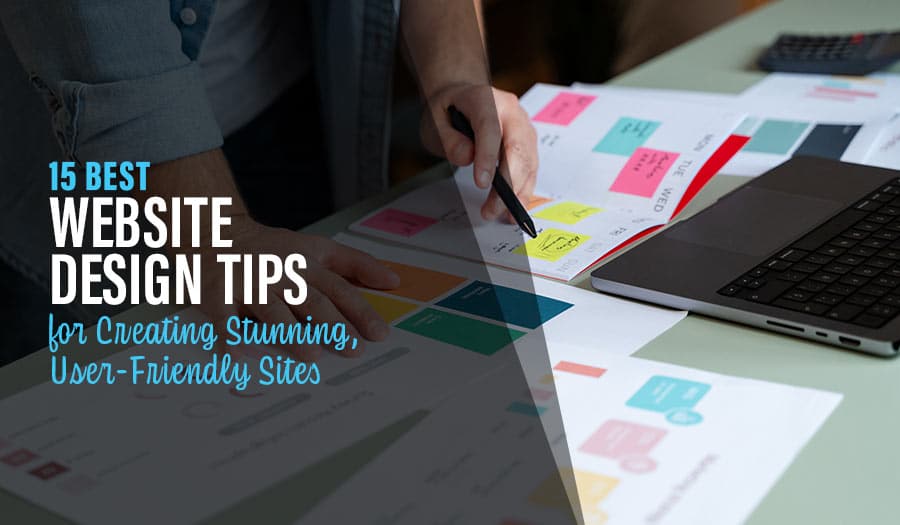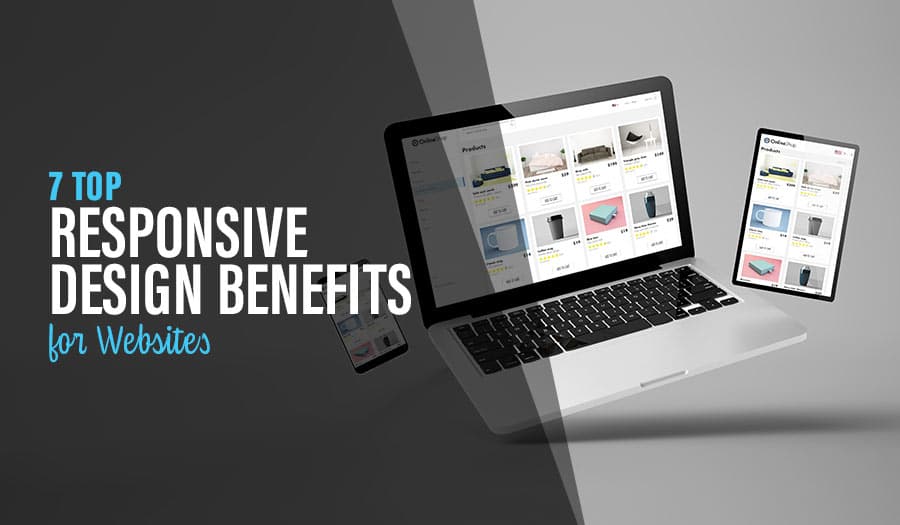Struggling with website design? Here are 15 must-know website design tips to help you build a stunning and user-friendly site. Discover key strategies on layout, navigation, mobile optimisation, and more. Let’s explore the Best Website Design Tips.
Best Website Design Tips: Key Takeaways
- Use clear visual hierarchy (position, colour, size) to guide users.
- Prioritise mobile and responsive design, including tap targets and lazy loading.
- Test often and use analytics to make data-driven improvements.
Choose a Clear Visual Hierarchy
A strong visual hierarchy helps people scan and find what matters. Emphasise key items with position, colour, and size. Use contrast to lift important elements off the background. Add white space to reduce noise and focus attention. Simple rules like the rule of thirds and leading lines help direct the eye. Clear hierarchy boosts both looks and usability.
Optimise for Mobile Devices
Most traffic is on mobile, so start there. Build the mobile view first and fix usability early. Use responsive design with flexible grids and fluid layouts. Avoid fixed breakpoints where possible. Make tap targets at least 44px. Use lazy loading so images and videos load when needed.
Use Ample White Space
White space (negative space) improves clarity and structure. It cuts distractions and helps visitors absorb key points. Keep gutters open and margins consistent. Balance content areas with empty space to improve reading and interaction.
Select a Cohesive Colour Palette
Your palette shapes brand feel and usability. Apply basic colour theory to choose harmonious sets. Use complementary colours for contrast on CTAs. Tools like Adobe Colour Picker can help. Vary tints and shades of a core hue to add depth while staying consistent.
Prioritise User-Friendly Navigation
Navigation should be obvious and simple. Label buttons clearly—avoid vague terms. Place menus and links where users expect them. Limit choices to speed decisions (Hick’s Law). Use dropdowns to group options without clutter. Visual cues and a clear structure lower bounce rates.
Create Compelling Calls to Action
CTAs tell users what to do next. Keep copy short and direct. Add white space around CTAs to make them stand out. Ensure colour and contrast are strong. Light urgency (e.g., “Limited stock”) can lift clicks. Test wording, size, placement, and subtle animations to improve results.
Implement Grid Systems
Grids create order and consistency. Choose a grid type (column, modular, hierarchical) to suit your layout. Use columns, gutters, and margins to align elements. Grids make interfaces easier to scan and use.
Optimise Images for Performance
Large images slow pages. Compress files to shrink size while keeping quality. Automate optimisation with plugins. Pick the right format: JPEG for photos, PNG for graphics. Resize before upload and use lazy loading to prioritise on-screen content. Faster pages improve UX and SEO.
Ensure Consistent Typography
Pick clean, readable fonts and stick to them. Use clear hierarchy for headings, body text, and links. Keep line lengths comfortable and paragraphs short. Plain language improves comprehension. Test spacing and sizes across devices.
Conduct Usability Tests
Watch users complete tasks to spot friction. Use analytics to see where they click, scroll, and drop off. Combine quantitative data (e.g., Google Analytics) with behaviour tools (e.g., Hotjar). Give testers context and specific tasks. A/B test key pages to validate changes.
Incorporate Interactive Elements
Interactive pieces increase engagement. Use maps, tours, quizzes, and surveys where they add value. Personalise when possible. Light gamification (badges, progress, rewards) can motivate deeper use.
Maintain Branding Consistency
Consistency builds trust. Apply brand colours, tone, and styles across pages and channels. Feature logo, name, and navigation clearly in the header. Keep voice and visuals aligned in all website content.
Focus on Accessibility
About 16% of people live with a disability. Design for everyone. Follow WAI/WCAG guidance from the start. Ensure interactive elements work with keyboards and screen readers. Test with users who have disabilities to catch issues early. Accessible sites reduce legal risk and expand your audience.
Use Analytics Tools
Track how people find and use your site. On-site tools show user behaviour; off-site tools reveal reach and sentiment. Google Analytics provides trends; behaviour tools visualise interactions. Use both to locate pain points and guide improvements. Data-led changes lift conversions.
Avoid Common Design Mistakes
Don’t let visuals override function. Keep interfaces simple and consistent. Test early and often to avoid costly rework. Ask for user feedback and improve based on evidence. Intuitive, uncluttered design helps users achieve goals—and converts better.
Summary
Great web design blends creativity with clear structure. Prioritise hierarchy, mobile, speed, accessibility, and testing. Short, readable content and consistent branding improve UX and conversions. Keep measuring, learning, and refining to stay effective over time.
Best Website Design Tips: Frequently Asked Questions
Why is mobile optimisation important for web design?
Most traffic is mobile. A mobile-first approach ensures a smooth experience on any screen and improves engagement and retention.
How can I improve my website’s visual hierarchy?
Use size, colour, and placement to highlight key items. Add white space and apply simple composition rules like the rule of thirds to guide the eye.
What are some effective ways to use white space in web design?
Use white space to separate sections, group related items, and spotlight key elements. It reduces clutter and makes pages feel open and inviting.
How can I ensure branding consistency across my website?
Apply brand colours, voice, and styles consistently. Keep headers, typography, and components uniform to reinforce identity.
What are the benefits of using analytics tools for web design?
They reveal user behaviour and pain points, helping you prioritise fixes and optimise for a more effective, user-friendly site.
Take your business to the next level with a Pixel Fish Website.
Check out some of our latest Website Design projects.
Further Information
Key Web Design Attributes Your Next Website Must Have
Website 404 Page Options: What to Do With Yours
8 Successful WordPress Website Design Best Practices
Top 10 Business Website Design Tips you may ever hear
Small Business SEO: Why Your Business Needs Google Analytics



